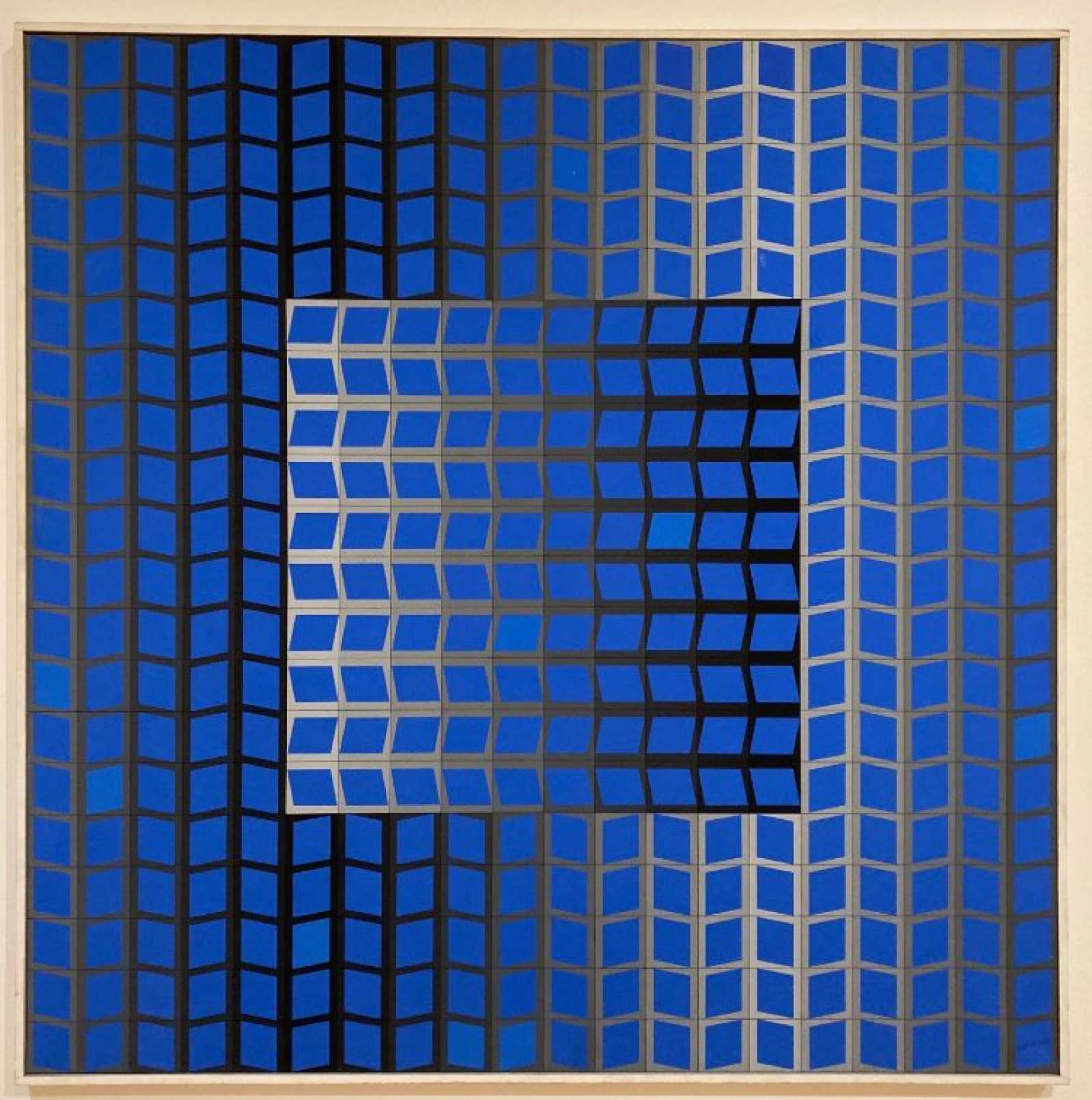Artworks of the Week
Victor Vasarely
Born in Hungary in 1906, Victor Vasarely studied medicine before becoming an artist; his interest in science influenced his experimentation with color and optics. He contributed significantly to the evolution of Op (or Optical) Art, an important development in 20th-century painting internationally, in which geometric forms and patterns were used to create visual effects. Vasarely moved to Paris in 1930 and first worked as a graphic artist to support himself while beginning an artistic career influenced by Surrealism as well as design.
Palm Springs Art Museum is fortunate to have thirteen works by Victor Vasarely in its collection—including two paintings and a sculpture, that are part of a group of Op Art installed in the Chase Wing. Along with works by Yaacov Agam and Jesús Rafael Soto, they will be on view when the museum reopens to the public this fall.
Victor Vasarely (French, 1908-1997), Zett-Kek, 1966, tempera on linen, 56 × 56 inches. Gift of Mr. and Mrs. William H. Wise, 77-1979.
Blossom Nez Yeh
This weaving is complex in its design, iconography, and execution. The subject is derived from Windway, a ceremony practiced by both Navajo and Chiricahua Apache. The four standing Yei figures represent Holy Wind people “dressed” with snakes. The central column of stacked black triangles represents clouds, and the guardian rainbow figure that surrounds the group signifies spiritual power.
The production of unusually large weavings like this requires tremendous effort and took up to three years to complete. This work required the construction of a special large loom and at least twenty pounds of carded, spun, natural and dyed wool to produce. It was commissioned by Herbert D. Lore for his trading post and tourist attraction, the Stone Tree House, now the Painted Desert Inn in the Petrified Forest National Park, Arizona.
While the Navajo weaving tradition dates back over three hundred years, images of Yei, or gods, taken from sand-painting did not appear until the early twentieth century. Nonetheless, these textiles are not themselves considered sacred objects.
Blossom Nez Yeh (Navajo, active 1920s), Navajo Windway Sand-painting Textile, Wind People Dressed (Clothed) in Snakes, 1920-1923, handspun natural wool, vegetal and synthetic dyes, 137 ½ x 139 inches. Gift of Mr. and Mrs. Seymour Lazar, A6-2004.


